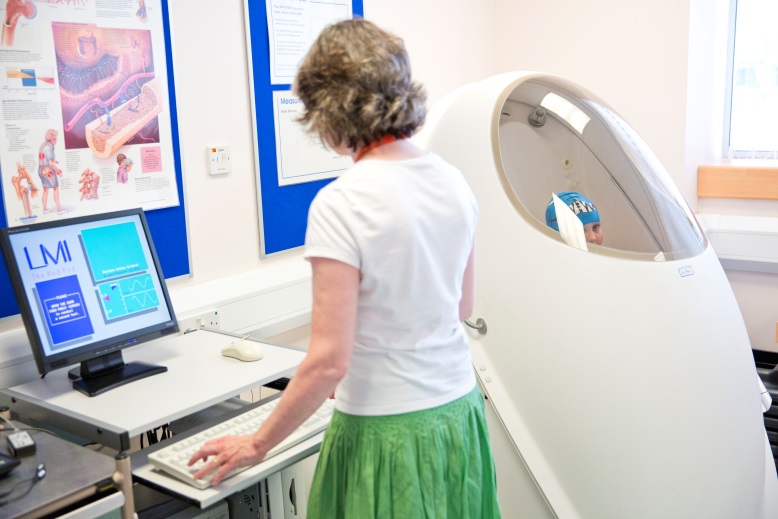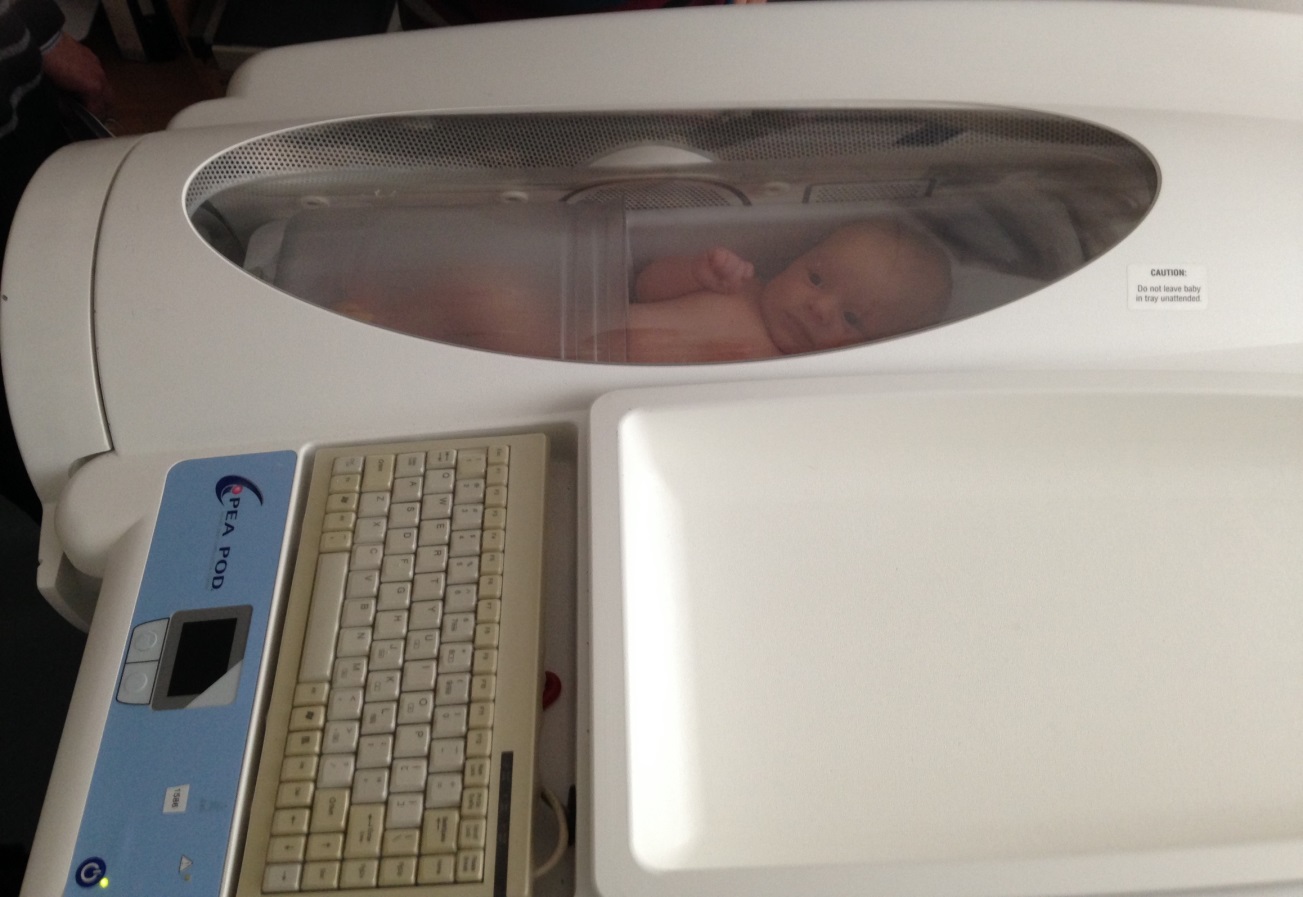- Introduction to Subjective Methods
- Birth weight
- Body shape
- Weight and height
- Waist and hip circumference
- Introduction to Objective Methods
- Simple measures - stature
- Simple measures - weight
- Simple measures - circumference
- Simple measures - arm anthropometry
- Simple measures - skinfolds
- Simple measures - abdominal sagittal diameter
- Simple measures - head circumference
- Bioelectric impedance analysis
- Multi-component models
- Hydrostatic underwater weighing
- Air displacement plethysmography
- Hydrometry
- Whole body DEXA scan
- Near infrared interactance
- Whole body counting of total body potassium
- 3d photonic scan
- Magnetic resonance imaging (MRI) / Magnetic resonance spectroscopy (MRS)
- Total body electrical conductivity (TOBEC)
- Computed tomography (CT)
- Ultrasonography
- Introduction anthropometric indices
- Body mass index
- Fat and fat free mass indices
- Ponderal index
- Percentiles and Z-scores
- Anthropometry Video Resources
- Height procedure
- Protocol for measuring waist circumference
- Measuring hip circumference
- Weight and body composition procedure
Air displacement plethysmography
Air displacement plethysmography (ADP) is a two-component model that assesses mass and volume and therefore an estimation of body density (Db). From this, body density derived from mass divided by volume can provide estimation of fat and fat-free mass (FFM).
The trade name for this method is BOD POD and PEA POD (Life measurement, Inc, Concord, CA), which are systems that uses Poisson’s Law to determine body volume. ADP offers several advantages over established reference methods, like underwater weighing, including a quick, comfortable, automated, noninvasive, and safe measurement process, and accommodates various body types. The range of error is ± 1 to 2.7%.
The process is divided into three steps: measurement of mass, volume and thoracic gas volume.
1. Mass measurement
Weight is measured using a very precise, integrated electronic scale.
2. Body volume measurement
Poisson’s Law describes the pressure – volume relations under conditions that allow gains and losses of temperature and pressure (unlike Boyles law) during expansion and compression whilst the heat content of the air remains constant. The BOD POD contains two chambers, a test chamber and a reference chamber connected by a diaphragm. Oscillations produce pressure changes in the chambers and the ratio of the pressures is a measure of test chamber volume.
Some of the volume of air, however, is still maintained under isothermal conditions that must still be accounted for, for example air contained in the lungs (thoracic gas volume) or near skin/hair and clothing (surface area artefact, SSA). For this reason, tight fitting clothing is worn along with a swimming hat. The estimate of SSA is automatically generated by the instrument.
Thoracic gas volume may be directly measured, retrieved from a previous test, predicted (using a standard prediction equation), or entered manually.
The measurement of body volume by BOD POD involves the following steps:
- A 2-point calibration process starting with the empty chamber to establish a baseline volume and then with a 50L calibration cylinder.
- The participant’s volume in the chamber is then measured, not corrected for thoracic gas volume of SSA.
- The participant’s volume is then repeated to check that the measurements are within 0.2% or 150ml agreement. If the first two measurements are inconsistent a third measurement is performed.
- The body volume is then corrected for thoracic volume (either measured, predicted [Crapo et al, 1982], or entered manually).
Pre-test Guidelines
Participants must not eat or engage in strenuous exercise for at least 2 hours before the scheduled appointment and should wear minimal, form fitting clothing and use a swimming cap to be worn during the test.
Figure 1 provides an illustration of the BOD POD used for adults (a smaller modified version is used for children and Figure 2 shows the PEA POD used for measuring body composition in infants up to 10kg (taking only 2 minutes).

Figure 1 Image of BOD POD.
Source: Addenbrooke's Clinical Research Centre NIHR/Wellcome Trust Clinical Research Facility & NIHR Clinical Investigation Ward, Addenbrookes Hospital Cambridge; University of Cambridge Department of Paediatrics.

Figure 2 Image of PEA POD.
Source: Addenbrooke's Clinical Research Centre NIHR/Wellcome Trust Clinical Research Facility & NIHR Clinical Investigation Ward, Addenbrookes Hospital Cambridge; University of Cambridge Department of Paediatrics.
ADP is recognized as a reference method for overall body composition, because of its ease of use and high level of accuracy. If each test is performed correctly according to the recommended guidelines, it is as accurate as hydrostatic (underwater) weighing, but quicker and easier to perform. It is available in some research laboratories, athletic, military, university and health and wellness settings throughout the world. It is normally employed in validation studies and used with other techniques to determine 4-component models.
Using ADP, body composition is predicted from known densities of soft tissue. The density of fat is 0.9kg/L and FFM is 1.2kg/L (taken from cadaver studies). Therefore, by calculating the density of the whole body using mass/volume from the BOD POD, we can calculate how much of the body is fat. A commonly used equation which translates whole body density to percent body fat is the Siri equation:
Percent Fat = [495/Density] - 450
Once whole body density and fat mass is obtained, the remaining can be associated with FFM:
Percent FFM = 100 - Percent Fat
There are different equations for different ethnicities and children.
An alternative equation for the prediction of body fat in a Caucasian population is Brozek. Schutte et al have derived equations based on black ethnic origins. While, equations for body density in children can be found in Lohman’s review (see references).
An overview of the characteristics of air displacement plethysmography is outlined in Table 1.
Table 1 Characteristics of air displacement plethysmography.
| Characteristic | Comment |
|---|---|
| Consideration | Comment |
| Number of participants | Small |
| Relative cost | Medium |
| Participant burden | Low |
| Researcher burden of data collection | Low |
| Researcher burden of coding and data analysis | Low |
| Risk of reactivity bias | No |
| Risk of recall bias | No |
| Risk of social desirability bias | No |
| Risk of observer bias | No |
| Space required | Medium |
| Availability | Medium |
| Suitability for field use | No |
| Participant literacy required | No |
| Cognitively demanding | No |
Considerations relating to the use of air displacement plethysmography are summarised by population in Table 2.
Table 2 Anthropometry by air displacement plethysmography in different populations.
| Population | Comment |
|---|---|
| Pregnancy | Suitable |
| Infancy and lactation | Use of this technique for longitudinal assessment of body composition between 1 and 4 years of age might be limited due to practical constraints, as weight capacity for a PEA POD is 10Kg. |
| Toddlers and young children | This technique may be impractical in young children as the protocol requires the participant to stay as still as possible; movements can invalidate the volume estimates. |
| Adolescents | Suitable |
| Adults | Suitable |
| Older Adults | Suitable |
| Ethnic groups | Suitable |
| Other | Suitable |
- Compared to underwater weighing, the BOD POD does not require getting wet and is suitable for special populations such as infants, children, obese, elderly and disabled persons. Residual lung volume measurements are not needed like underwater weighing.
- Hydration status can adversely affect calculation results.
- Excessive movement can introduce large error so it is essential to ensure the subject sits still and breathes normally.
- The test does not identify the exact parts of the body where the fat is located.
- The BOD POD technology is fundamentally the same as underwater (hydrostatic) weighing, but uses air instead of water.
- Ensure calibration is carried out every time the equipment is in use. Both the scale and chamber need to be calibrated.
- Clothing restrictions maybe of some concerns for individuals as to ensure accuracy, participants need to wear a swim cap and tightfitting swimsuit.
- The size of the chamber may be restrictive for very large individuals.
Refer to section: practical considerations for objective anthropometry
- BOD POD is approximately $35,000
- PEA POD system is considerably more at approximately $112,000 due to limited manufacturing
A method specific instrument library is being developed for this section. In the meantime, please refer to the overall instrument library page by clicking here to open in a new page.
Previously, obtaining reliable infant body composition data has been difficult, with available methods limited by inaccuracy, practicality, invasiveness, and safety. The PEA POD has solved some of these issues by offering more accurate and precise measurements of infant (up to 10kg) body fat and fat-free mass quickly (2 mins), safely, and comfortably using its patented and proven air displacement plethysmography. However, the use of this technique for longitudinal assessment of body composition between 1 and 4 years of age might still be limited due to the practical constraints mentioned above.
- Brozek, J., et al., Densitometric Analysis of Body Composition: Revision of Some Quantitative Assumptions. Ann N Y Acad Sci, 110: p. 113-40.
- Crapo, R.O., et al., Lung volumes in healthy nonsmoking adults. Bull Eur Physiopathol Respir, 18(3): p. 419-25.
- Deierlein AL, Thornton J, Hull H, Paley C, Gallagher D: An anthropometric model to estimate neonatal fat mass using air displacement plethysmography Nutr Metab (London) 2012: 9;21
- Dempster P, Aitkens S: A new air displacement method for the determination of human body composition.Med Sci Sports Exerc 1995: 27;1692
- Ellis KJ, Yao M, Shypalio RJ, Urlando A, Wong WW, Heird WC: Body composition assessment in infancy: air-displacement plethysmography compared with a reference 4-compartment model Am J Clin Nutr 2007: 85; 90
- Fields DA, Allison DB: Air displacement plethysmography pediatric option in 2-6 years old using the four-compartment model as a criterion methods Obesity 2012: 20; 1732
- Fields DA, Goran MI, McCrory MA: Body composition assessment via air-displacement plethysmography in adults and children: a review Am J Clin Nutr 2002: 75; 453
- Lohman, T.G., Skinfolds and body density and their relation to body fatness: a review. Hum Biol, 53(2): p. 181-225.
- Maddalozzo GF, Cardinal BJ, Snow CA: Concurrent validity of the BOD POD and dual energy x-ray absorptiometry techniques for assessing body composition in young women. J Am Diet Assoc. 2002; 102: 1677
- McCrory MA, Gomez TD, Bernauer EM, Molé PA: Evaluation of a new air displacement plethysmograph for measuring human body compositionMed Sci Sports Exerc 1995: 27; 1686
- Siri, W.E., Body composition from fluid spaces and density: analysis of methods. 1961. Nutrition, 1993. 9(5): p. 480-91; discussion 480, 492.
- Schutte, J.E., et al., Density of lean body mass is greater in blacks than in whites. J Appl Physiol Respir Environ Exerc Physiol, 56(6): p. 1647-9.
- Utter AC, Goss FL, Swan PD, Harris GS, Robertson RJ, Trone GA: Evaluation of air displacement for assessing body composition of collegiate wrestlers. Med Sci Sports Exerc 2003: 35; 500
- Urlando A: A new air displacement plethysmograph for the measurement of body composition in infants Pediatr Research 2003: 53; 486
